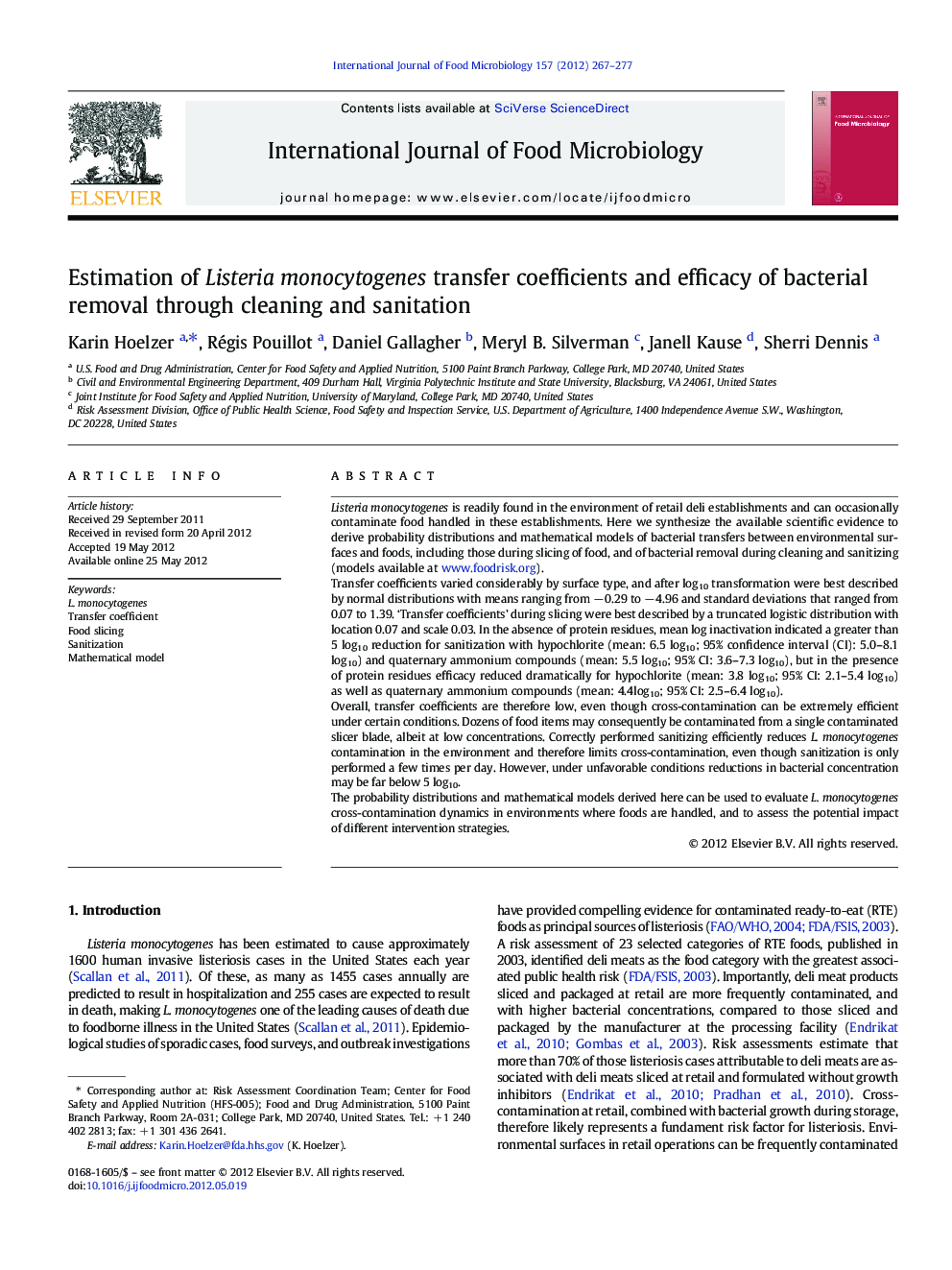| کد مقاله | کد نشریه | سال انتشار | مقاله انگلیسی | نسخه تمام متن |
|---|---|---|---|---|
| 4367609 | 1616643 | 2012 | 11 صفحه PDF | دانلود رایگان |

Listeria monocytogenes is readily found in the environment of retail deli establishments and can occasionally contaminate food handled in these establishments. Here we synthesize the available scientific evidence to derive probability distributions and mathematical models of bacterial transfers between environmental surfaces and foods, including those during slicing of food, and of bacterial removal during cleaning and sanitizing (models available at www.foodrisk.org).Transfer coefficients varied considerably by surface type, and after log10 transformation were best described by normal distributions with means ranging from − 0.29 to − 4.96 and standard deviations that ranged from 0.07 to 1.39. ‘Transfer coefficients’ during slicing were best described by a truncated logistic distribution with location 0.07 and scale 0.03. In the absence of protein residues, mean log inactivation indicated a greater than 5 log10 reduction for sanitization with hypochlorite (mean: 6.5 log10; 95% confidence interval (CI): 5.0–8.1 log10) and quaternary ammonium compounds (mean: 5.5 log10; 95% CI: 3.6–7.3 log10), but in the presence of protein residues efficacy reduced dramatically for hypochlorite (mean: 3.8 log10; 95% CI: 2.1–5.4 log10) as well as quaternary ammonium compounds (mean: 4.4log10; 95% CI: 2.5–6.4 log10).Overall, transfer coefficients are therefore low, even though cross-contamination can be extremely efficient under certain conditions. Dozens of food items may consequently be contaminated from a single contaminated slicer blade, albeit at low concentrations. Correctly performed sanitizing efficiently reduces L. monocytogenes contamination in the environment and therefore limits cross-contamination, even though sanitization is only performed a few times per day. However, under unfavorable conditions reductions in bacterial concentration may be far below 5 log10.The probability distributions and mathematical models derived here can be used to evaluate L. monocytogenes cross-contamination dynamics in environments where foods are handled, and to assess the potential impact of different intervention strategies.
► Listeria monocytogenes transfer coefficients (TCs) and sanitization were analyzed.
► TCs were generally low, indicating that contamination can be spread to many food items.
► Sanitizing efficacy was strongly affected by external conditions.
► Strict adherence to cleaning and sanitizing SOPs is thus crucial to assure efficacy.
► Stochastic models of transfer and sanitization were derived for risk assessments.
Journal: International Journal of Food Microbiology - Volume 157, Issue 2, 2 July 2012, Pages 267–277